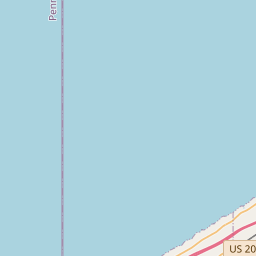In Memoriam
Historical marker location:
2 West Main Street, Westfield, New York
( Memorial is on West Main Street (U.S. 20) east of South Portage Street (New York State Route 394), on the right when traveling east.)







© OpenStreetMap contributors
Loading...
Searching for other points of interest within 3 miles of this location.New York State was the site of the deadliest terrorist attack in United States history prior to 9/11. In 1993, a bomb planted in the World Trade Center by Islamic extremists killed six people and injured more than a thousand others.
About Chautauqua County
Chautauqua County Timeline
Chautauqua County, located in western New York State, has a rich and colorful history that dates back thousands of years. The area was originally inhabited by the Erie people, a Native American tribe, until the 17th century when European settlers began to arrive. The region was officially formed as Chautauqua County in 1811, named after the beautiful Chautauqua Lake that lies within its borders.
In the early years, the county primarily relied on agriculture and timber industries for its economic growth. As the Erie Canal was completed in the 1820s, it opened up new opportunities for trade and transportation, allowing the county to expand its reach. With the arrival of the railroad in the mid-19th century, Chautauqua County's industries boomed, attracting more settlers and leading to the establishment of numerous towns and villages.
During the late 19th century, Chautauqua County became famous for its Chautauqua Institution, a center for education and cultural activities. The Chautauqua Institution attracted intellectuals, artists, and scholars from around the country, providing a platform for open discussions on various topics including politics, religion, and social issues. This institution played a significant role in the popularization of the Chautauqua Movement, a nationwide movement that aimed to promote lifelong learning and personal growth.
In the early 20th century, Chautauqua County's economy diversified further with the rise of manufacturing industries, such as furniture, textiles, and machinery. Many of these industries thrived until the mid-20th century, when economic changes and globalization led to a decline in manufacturing jobs. However, the county has since adapted and shifted towards a more service-based economy, including tourism, healthcare, and education.
Today, Chautauqua County continues to embrace its history while forging ahead in the modern world. The county's natural beauty, including its lakes, forests, and charming towns, attracts visitors year-round. It also remains an important cultural hub, hosting various festivals, museums, and art centers. Chautauqua County's blend of history, natural splendor, and contemporary amenities contribute to its unique character and make it a sought-after destination for residents and tourists alike.
In the early years, the county primarily relied on agriculture and timber industries for its economic growth. As the Erie Canal was completed in the 1820s, it opened up new opportunities for trade and transportation, allowing the county to expand its reach. With the arrival of the railroad in the mid-19th century, Chautauqua County's industries boomed, attracting more settlers and leading to the establishment of numerous towns and villages.
During the late 19th century, Chautauqua County became famous for its Chautauqua Institution, a center for education and cultural activities. The Chautauqua Institution attracted intellectuals, artists, and scholars from around the country, providing a platform for open discussions on various topics including politics, religion, and social issues. This institution played a significant role in the popularization of the Chautauqua Movement, a nationwide movement that aimed to promote lifelong learning and personal growth.
In the early 20th century, Chautauqua County's economy diversified further with the rise of manufacturing industries, such as furniture, textiles, and machinery. Many of these industries thrived until the mid-20th century, when economic changes and globalization led to a decline in manufacturing jobs. However, the county has since adapted and shifted towards a more service-based economy, including tourism, healthcare, and education.
Today, Chautauqua County continues to embrace its history while forging ahead in the modern world. The county's natural beauty, including its lakes, forests, and charming towns, attracts visitors year-round. It also remains an important cultural hub, hosting various festivals, museums, and art centers. Chautauqua County's blend of history, natural splendor, and contemporary amenities contribute to its unique character and make it a sought-after destination for residents and tourists alike.
Chautauqua County Timeline
This timeline provides a concise overview of the key events in the history of Chautauqua County, New York.
- 1803: Chautauqua County is founded
- 1811: First European settlers arrive in the area
- 1818: The Village of Mayville is incorporated
- 1821: The Village of Westfield is incorporated
- 1836: The City of Jamestown is incorporated
- 1851: The Chautauqua Institution is established
- 1875: The Dunkirk and Fredonia Railroad is completed
- 1878: The Village of Fredonia is incorporated
- 1892: The Chautauqua Grape Belt Association is formed
- 1898: The Jamestown Chamber of Commerce is established
- 1901: The Celoron Amusement Park opens
- 1923: Chautauqua Lake freezes over completely for the first time on record
- 1953: The Chautauqua County Historical Society is founded
- 1960: The Chautauqua County Airport is opened
- 1973: The Chautauqua Institution is designated a National Historic Landmark
- 1992: The Chautauqua County-Jamestown Airport is renamed the Chautauqua County-Jamestown Airport
- 2006: The Chautauqua Rails to Trails project is completed
- 2011: The National Comedy Center opens in Jamestown